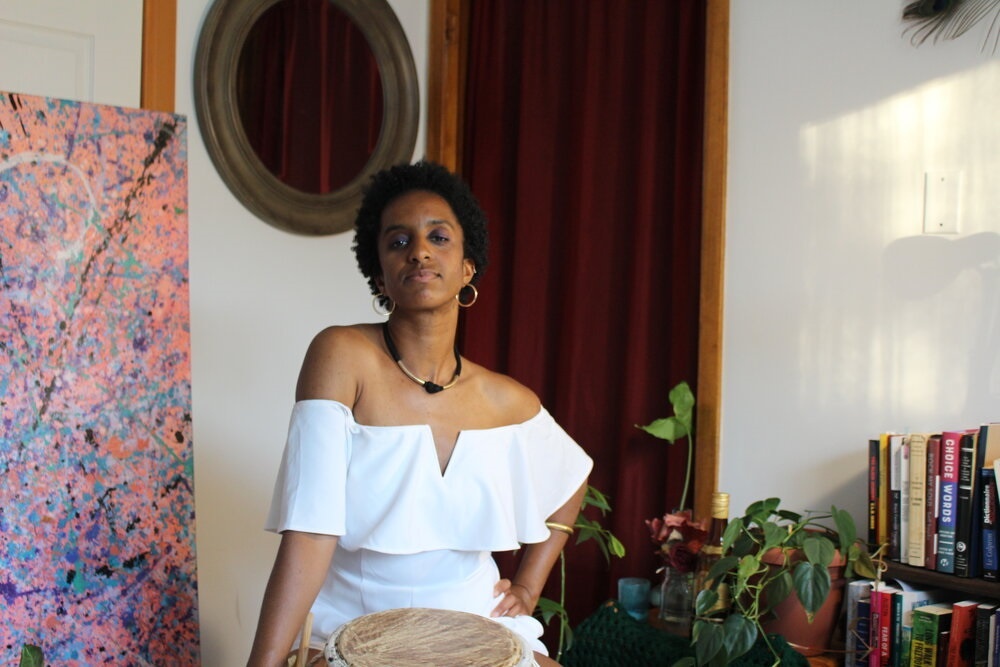Documenting Black Dancing Bodies Against the Odds

Documenting Black Dancing Bodies Against the Odds
By Emilie “Zila” Jabouin
When people ask me what I do, I say I am a dance artist and a researcher. The two actually go very intimately hand-in-hand. I research to tell forgotten stories of black women and of black history particularly in the Americas as a whole, and I dance to share those stories intimately and process them in my body for others to be present to them.
In 2022, I had the privilege to work with Dr. Seika Boye on her dance history exhibition, “It’s About Time: Dancing Black in Canada, 1900-1970, and Now” that had opened in Vancouver, BC on October 12, 2022 at the Audain Gallery as a critical engagement with historical representations of Black people in performance. In preparation for the opening of the exhibit as part of the International Association of Blacks in Dance (IABD) held in from January 25-29, 2023, I kept a different intention and audience in mind. This showing was going to be for an international audience, or at least an American one that for the most part knew close to nothing about Canada, and was maybe even hesitant—and secretly doubtful—about whether Black Canada was relevant at all.
Regardless, working on “It’s About Time”, documenting Black dancers, their diasporic realities, their work within and outside the dance space was so fulfilling because I saw myself, my life, my passions and work reflected and contextualized in their stories.
Five artists were highlighted in this exhibit, including: Paul Pettiford, Dindi Lidge, Jean Sheen, Kevin Pugh, and Zab Maboungou; three of which are still alive—Zab Maboungou, Kevin Pugh, and Jean Sheen—and have been active in creating ground-breaking and foundational spaces for all dancers, while maintaining the rigorousness of dance as an artform to thrive. There is a tinge of activism and commitment to future generations that all of these dancers, choreographers and advocates exhibited. This was noticeable in the character roles they took on during their career; their decision to teach; their promotion of dance education and scholarship here and abroad; the opening of dance schools; as well as their development of foundational techniques. All have made great contributions to the landscape of dance and for the future of Black dance in Canada specifically in ways that are difficult to grasp—and that are made more palpable through this historical and timely exhibition that continues to give.
A point I would like to share are some of the difficulties of let’s say, not finding dancing images of Jean Sheen, one of the artists highlighted in the exhibition “It’s About Time”. This could be a result of how often dancers are overlooked (even in dance spaces) as being the glue, the in-between, the bones that make choreographic work possible! There are also many false beliefs that we, as dancers, are just there to present the work…nothing else. These misconceptions greatly underestimate for example the more mature dancers in their 30s, 40s and older all together who have a very different relationship with their bodies, than younger dancers who maybe have less or no injuries and who can twist their bodies in ways that may not be as easily possible for some of us anymore. Either way, the dance really cannot be divorced from the body, from the stories, from the weight of the experiences, and from the ways in which we individually express ourselves…Another point that troubles me, is the shame and discouragement of knowing that precious information about Paul Pettiford’s life and commitments to dance, to Black art and to community in “Blackhurst”—the historically Black Bathurst and Bloor neighbourhood of downtown Toronto, are fizzling away as we presently speak in the Toronto Library archives. Their deterioration is caused by underfunding. Point blank. The underfunded nature of archival practices in turn underprioritizes the documentation of Black communities in Canada—which continues to feed the idea that we are simply not here.
Although immigration laws and policies have for long dictated how Black dancers move through Canada and in Canada, and I am proud to say that regardless of the odds, we continue to dance, create, advocate for our communities and our unique artistic expressions, then and now.




Leave a Reply
Want to join the discussion?Feel free to contribute!